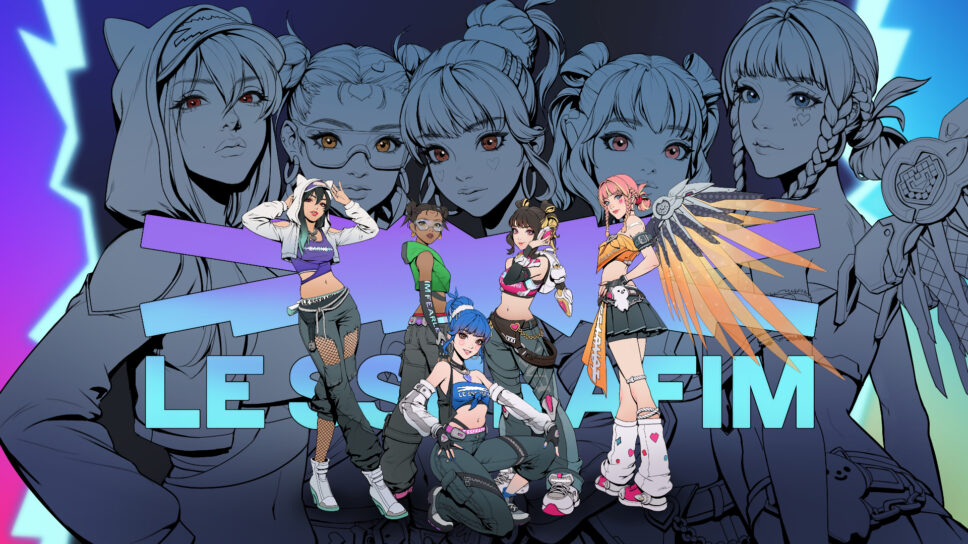
The gaming industry has increasingly turned to cross-industry collaborations to expand their reach, and Blizzard’s latest Overwatch 2 x LE SSERAFIM partnership is a prime example. By integrating the globally popular K-pop group into Overwatch 2, Blizzard aims to drive engagement, increase microtransactions, and strengthen brand presence.
But how does the Overwatch 2 x LE SSERAFIM collaboration contribute to the game’s return on investment (ROI)?
The partnership strategically taps into LE SSERAFIM’s massive global fanbase, which includes millions of dedicated followers across social media platforms. By incorporating exclusive in-game content inspired by the group, such as skins, voice lines, and themed events, Blizzard can attract both returning players and new audiences who may not have engaged with the game before. This crossover ensures a surge in active players, ultimately increasing potential revenue streams.
One of the most significant ways this collaboration impacts ROI is through microtransactions. Microtransactions are small in-game purchases that players make using real money to buy virtual items, such as character skins, emotes, weapons, or other digital content. These transactions are common in free-to-play and live-service games like Overwatch 2, where they serve as a primary revenue stream.
Overwatch 2 players have consistently shown a willingness to spend on premium skins and event-exclusive cosmetics. The introduction of LE SSERAFIM-themed skins, emotes, and voice packs is expected to drive in-game purchases, capitalizing on both the fandom’s enthusiasm and the gaming community’s desire for unique, limited-time items. The FOMO (fear of missing out) effect further amplifies spending behavior, leading to higher revenue.
Learn more: Understanding Urgency-Based Marketing: How Scarcity and FOMO Drive Sales
Blizzard has released a set of ten new Legendary skins inspired by the group, featuring characters such as Ashe, Illari, Mercy, Juno, and D.Va, alongside recolored versions of previous skins.
Beyond skins, Blizzard has also introduced exclusive emotes, voice lines, and highlight intros, further enticing players to customize their experience. Given the historical success of similar collaborations in other games (e.g., BTS x Fortnite, BLACKPINK x PUBG), the Overwatch 2 event is poised to generate significant revenue through microtransactions.
Furthermore, bundle pricing strategies encourage higher spending. Instead of purchasing individual cosmetics, players can opt for discounted bundles featuring multiple items, increasing overall transaction values. Blizzard’s track record shows that well-executed collaborations can result in millions in additional revenue, making this a high-return strategy in the competitive live-service gaming market.
For advertisers, this collaboration offers valuable lessons in leveraging fandom culture for marketing success. Brands can replicate this strategy by aligning with influential pop culture figures, encouraging user-generated content, and fostering community-driven engagement. The key lies in creating exclusive, time-sensitive experiences that prompt audiences to share and interact with the content, thereby amplifying its reach organically.
For example;
1) A post from Overwatch Official about the Overwatch 2 X LE SSERAFIM collaboration has gained a total of 5.9k reposts, 18k likes, and 1.4m views:
2) A UGC post on X (Twitter) about the Overwatch 2 X LE SSERAFIM collaboration has gained a total of 2.5k reposts, 13k likes, and 435k views:
Additionally, brands should maximize cross-platform promotions, ensuring that collaborations extend beyond a single medium and engage audiences across various social channels.
Many players who may have previously left Overwatch 2 could find a reason to return due to this event. Whether they are K-pop fans or interested in new content, re-engaging past players presents a direct opportunity to increase concurrent player counts and in-game spending. Given that Overwatch 2 operates on a free-to-play model, keeping engagement high is critical for sustained revenue growth.
Furthermore, risk mitigation is essential when advertisers want to engage in similar pop culture collaborations. Ensuring that partnerships align with brand values and audience expectations can help prevent backlash.
Advertisers should also conduct market research and sentiment analysis before launching campaigns to gauge potential reception. Providing alternative content for audiences less interested in the collaboration can further minimize dissatisfaction while maintaining engagement with the core community.
Additionally, clear communication and transparency about pricing, exclusivity, and event timelines can help build trust and sustain long-term customer relationships.
Industry experts highlight the growing influence of pop culture collaborations in gaming as a powerful tool for expanding audience reach.
For advertisers, this collaboration underscores the importance of leveraging cultural trends to build stronger connections with target audiences. The key takeaways include harnessing the power of influencer partnerships, fostering organic engagement through social media, and creating exclusive, time-sensitive offerings that drive urgency and demand.
Additionally, ensuring a balanced approach to pricing and audience segmentation can help maximize the impact of such collaborations while minimizing potential backlash. By adopting these strategies, brands can enhance their marketing effectiveness and improve long-term ROI.
Want to boost your website traffic and dominate your digital marketing strategy? FoxAdvert specializes in driving targeted traffic, increasing engagement, and maximizing revenue for businesses. Let us help you turn clicks into conversions!
Don't miss out on long-term growth. Book a consultation with FoxAdvert today and start building a sustainable digital marketing strategy. Schedule your free strategy session now!